Worcester, Massachusetts 作者: 来源: 发布时间:2021-11-08
I.Population and Area
₋Area
Land: 37.6 sq mi (97.3 km2)
₋Population
Total: 181,045
Density: 4,700/sq mi (1,800/km2)
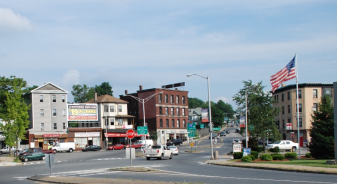
II.Natural Geography
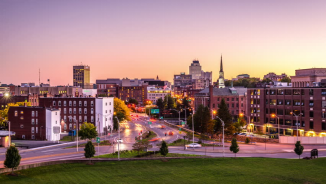
Street View
₋Worcester (/ˈwʊstər/ WUUS-tər) is a city, and county seat of, Worcester County, Massachusetts, United States. Named after Worcester, England, as of the 2010 Census the city's population was 181,045, making it the second-most populous city in New England after Boston. Worcester is approximately 40 miles (64 km) west of Boston, 50 miles (80 km) east of Springfiel d and 40 miles (64 km) north of Providence. Due to its location in Central Massachusetts, Worcester is known as the "Heart of the Commonwealth", thus, a heart is the official symbol of the city. However, the heart symbol may also have its provenance in lore that the Valentine's Day card, although not invented in the city, was first mass-produced and popularized by Worcester resident Esther Howland.
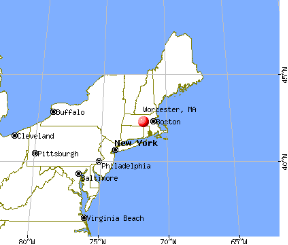
₋Worcester was considered its own distinct region apart from Boston until the 1970s. Since then, Boston's suburbs have been extending further westward, especially after the construction of Interstate 495 and Interstate 290. The Worcester region now marks the western periphery of the Boston-Worcester-Providence (MA-RI-NH) U.S. Census Combined Statistical Area (CSA), or Greater Boston. The city features many examples of Victorian-era mill architecture.
III.ECONOMY
₋The average salary in Worcester, MA is $65k. Trends in wages decreased by -0.3 percent in Q2 2020. The cost of living in Worcester, MA is 18 percent higher than the national average. The most popular occupations in Worcester, MA are Operations Manager, Mechanical Engineer, and Office Manager which pay between $40k and $114k per year. The most popular employers in Worcester, MA are The Hanover Insurance Company, UMASS Memorial Medical Center, and Worcester Polytechnic Institute (WPI).
₋Website: https://www.payscale.com/research/US/Location=Worcester-MA/Salary
IV.Industrial Characteristics
₋By the mid-19th century Worcester was one of New England's largest manufacturing centers. The city's large industries specialized in machinery, wire production, and power looms. Although manufacturing has declined, the city still maintains large manufactures, like Norton Abrasives, which was bought by Saint-Gobain in 1990, Morgan Construction Company, since bought by Siemens and then bought by Japanese company PriMetals Technologies, and the David Clark Company. The David Clark Company pioneered aeronautical equipment including anti-gravity suits and noise attenuating headsets.
₋Services, particularly education and healthcare, make up a large portion of the city's economy. Worcester's many colleges and universities make higher education a considerable presence in the city's economy. Hanover Insurance was founded in 1852 and retains its headquarters in Worcester. Unum Insurance and Fallon Community Health Plan have offices in the city. Polar Beverages is the largest independent soft-drink bottler in the country and is in Worcester.
₋Worcester is home to the largest concentration of digital gaming students in the United States. The Memorial Auditorium, built as a tribute to World War I veterans of Worcester, is undergoing a renovation and may cater to these Digital Students as a future multimedia and digital center, in conjunction with the twelve Worcester colleges and universities.
₋As one of the top ten emerging hubs for tech startups, the city's biotechnology and technology industries have helped spur major expansions at both the University of Massachusetts Medical School and Worcester Polytechnic Institute. The Massachusetts Biotechnology Research Park hosts many innovative companies including Advanced Cell Technology and AbbVie. The Worcester Foundation for Experimental Biology in nearby Shrewsbury developed the oral contraceptive pill in 1951.
₋Downtown Worcester used to boast major Boston retailers Filene's and Jordan Marsh as well Worcester's own department stores Barnard's and Denholm & McKay. Over time most retailers moved away from downtown and into the suburban Auburn Mall and Greendale Mall in North Worcester.
₋In 2010, the median household income was $61,212. Median family income was $76,485. The per capita income was $29,316. About 7.7% of families and 10.8% of the population were below the poverty line, including 14.1% of those under age 18 and 7.5% of those age 65 or over. In October 2013, Worcester was found to be the number five city for investing in a rental property.
₋In November 2016, the administration of Massachusetts Governor Charlie Baker announced a $2.3 million grant to the city to redevelop its downtown area for greater walkability. In January 2017, Baker signed into law a bill allowing 44 acres of unused state-owned land on the former Worcester State Hospital campus to be converted into a biomanufacturing industrial park. In November 2017, Baker's administration and the Worcester Business Development Corporation signed a land disposition agreement for the park.
V.Attractions
1.Worcester Art Museum
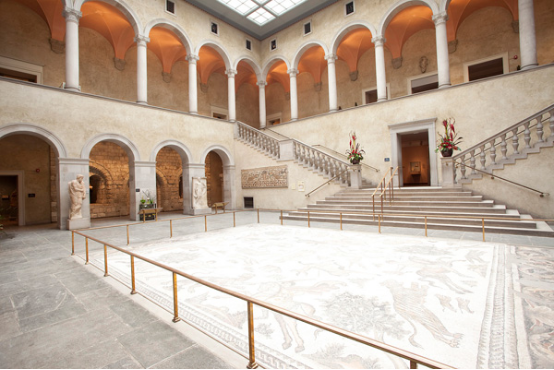
₋The Worcester Art Museum, also known by its acronym WAM, houses over 38,000 works of art dating from antiquity to the present day and representing cultures from all over the world. WAM opened in 1898 in Worcester, Massachusetts, and ranks among the more important art museums of its kind in the nation. Its holdings include some of the finest Roman mosaics in the United States, outstanding European and American art, and a major collection of Japanese prints. Since acquiring the John Woodman Higgins Armory Collection in 2013, WAM is also home to the second largest collection of arms and armor in the Americas. In many areas, it was at the forefront in the US, notably as it collected architecture (the Chapter House, 1932), acquired paintings by Monet (1910) and Gauguin (1921), presented photography as an art form (1904)[5] The Worcester Art Museum also has a conservation lab and year-round studio art program for adults and youth.
₋In September 1896, Stephen Salisbury III and a group of his friends founded the Art Museum Corporation to build an art institution "for the benefit of all." Salisbury then gave a tract of land, on what was once the Salisbury farm (now fronting Salisbury Street in Worcester, Massachusetts), as well as $100,000 USD to construct a building designed by Worcester architect Stephen C. Earle. The museum formally opened in 1898 with the Rev. Daniel Merriman as its first president. The museum's collection then consisted largely of plaster casts of "antique and Renaissance" sculptures, as well as a selection of 5,000 Japanese prints, drawings, and books, willed to the museum from John Chandler Bancroft, son of John Bancroft.
₋In 1905, Stephen Salisbury died and left the bulk of his five million-dollar estate to the museum. The Worcester Art Museum continued to grow and slowly amassed one of the important art collections in the country, with some of the significant early works donated or loaned by the artist and collector Helen Bigelow Merriman.
₋Between 1932 and 1939, the Worcester Art Museum joined a consortium of museums and institutions to sponsor expeditions to the archaeological sites where the city of Antioch once stood. This group of museums, including Princeton University, the Musée du Louvre, the Baltimore Museum of Art, and Harvard University's affiliate, Dumbarton Oaks, discovered hundreds of intricate floor mosaics. The Antioch mosaics, as they are now known, were split up among the institutions The WAM received many mosaics including the Worcester Hunt, which is now installed in the Renaissance Court's floor.
₋On May 17, 1972, the museum suffered a major theft of artwork. Two men wearing masks entered the museum just before closing. The two men stole The Brooding Woman and Head of a Woman by Paul Gauguin, Mother and Child by Pablo Picasso, and St. Bartholomew, then attributed to Rembrandt, a collection of works worth over one million dollars. Four individuals were charged with the theft as well as the theft of seven artworks stolen from the Boyden Library at Deerfield Academy.
₋In 2013, Worcester’s Higgins Armory Museum closed its doors and its renowned collection of arms and armor was integrated into WAM’s. A permanent arms and armor gallery will open no later than 2023; in the meantime, major works from the Higgins collection are on view in galleries throughout the museum, alongside Greek, Roman, Asian, and European works of art. The museum is also rethinking its institutional narrative, leveraging the quality and depth of the collection to tell a story that is an alternative to those told by other museums in the area. The guiding principle for this endeavor is WAM’s new mission statement (adopted in 2017): The Worcester Art Museum connects people, communities, and cultures through the experience of art.
₋Address: 55 Salisbury St, Worcester, MA 01609, United States
₋Phone: +1 508-799-4406
₋Founded: 1898, Worcester, Massachusetts, United States
₋Director: Waschek
₋Website: https://www.worcesterart.org/
2.Tower Hill Botanic Garden
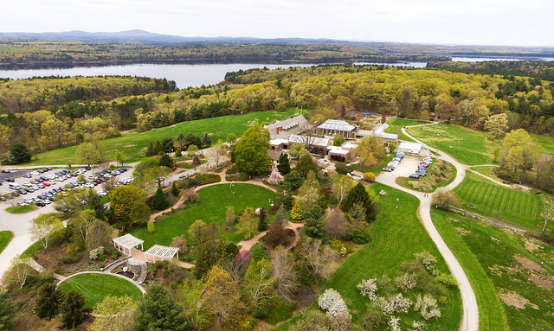
₋Tower Hill Botanic Garden is a 171-acre botanic garden and arboretum located in Boylston, Massachusetts, approximately 8 miles (13 km) north of central Worcester in Worcester County, Massachusetts. Tower Hill features 17 distinct gardens, preserved woodlands, and miles of walking trails.
₋It was founded in 1986 on the former Tower Hill Farm by the Worcester County Horticultural Society, which maintains its headquarters here and is the third oldest horticultural society in the U.S.
₋The mission of Tower Hill Botanic Garden is to: "Inspire the use and appreciation of horticulture to improve lives, enrich communities and strengthen commitment to the natural world." This mission is enhanced by six organizational values: Learning, Stewardship, Sustainability, Inclusivity, Joy, and Excellence.
₋The Stoddard Education and Visitors Center — the hub for visitor activities at the Tower Hill Botanic Garden. The complex houses: Farmer & The Fork Cafe; Garden Shop; a 100-seat theater; four classrooms and conference space; and the Tower Hill Library with horticulture, gardening, and botany books, magazines, DVDs, and archival materials.
₋Address: 11 French Dr, Boylston, MA 01505, United States
₋Phone: +1 508-869-6111
₋Website: https://www.towerhillbg.org/
3. Wachusett Reservoir
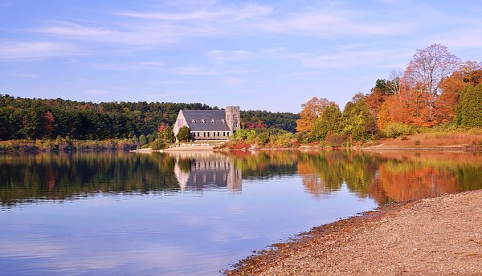
₋The Wachusett Reservoir is the second largest body of water in the state of Massachusetts. It is located in central Massachusetts, northeast of Worcester. It is part of the water supply system for metropolitan Boston maintained by the Massachusetts Water Resources Authority (MWRA). It has an aggregate capacity of 65 billion US gallons (250,000,000 m3) and an area of almost 7 square miles (18.2 km²). Water from the Wachusett flows to the covered Norumbega Storage Facility via the Cosgrove Tunnel and the MetroWest Water Supply Tunnel. The reservoir has a maximum depth of 120 feet (36.5 m) and a mean depth of 48 feet (14.6 m).
₋The reservoir serves as both an intermediate storage reservoir for water from the Quabbin Reservoir, and a water source itself, fed by its own watershed. The reservoir is fed by the Quinapoxet, and Stillwater rivers, along with the Quabbin Aqueduct, which carries water from the Quabbin Reservoir. It is part of the Nashua River Watershed and is the headwaters of the Nashua River. Because it is an intermediate storage reservoir, its water levels are kept relatively constant while the Quabbin Reservoir fluctuates based on precipitation and demand. At times when the Wachusett Reservoir becomes high due to its own watershed producing a large amount of runoff such as during snow melting, the flow from the Quabbin is shut off and water from the Ware River flows backwards down the Quabbin Aqueduct into the Quabbin Reservoir for storage.
₋In 1897, the Nashua River above the town of Clinton was impounded by the Wachusett Dam; 4,380 acres (17.5 km²) were flooded in the towns of Boylston, West Boylston, Clinton, and Sterling. Work was completed in 1905 and the reservoir first filled in May 1908. Its water was originally delivered to the Sudbury Reservoir via the Wachusett Aqueduct, with the Cosgrove Tunnel (completed in 1965) providing redundancy. Interconnections at the Sudbury Reservoir eventually delivered the water to the Weston Reservoir via the Weston Aqueduct; these downstream facilities were relegated to backup roles in the late 20th and early 21st century by the construction of the MetroWest Water Supply Tunnel and covered storage facilities.
₋West Boylston's prominent landmark—The Old Stone Church—was left remaining as a reminder of those that lost their homes and jobs to the building of the reservoir. It is one of the most photographed sites in the area.
₋When it was built, the Wachusett Reservoir was the largest public water supply reservoir in the world and the largest body of water in Massachusetts. It has since been surpassed by the Quabbin Reservoir (see that article for a history of reservoir building in Massachusetts).
₋Website: https://www.mass.gov/locations/wachusett-reservoir
VI.History
₋The area was first inhabited by members of the Nipmuc tribe. The native people called the region Quinsigamond and built a settlement on Pakachoag Hill in Auburn. In 1673 English settlers John Eliot and Daniel Gookin led an expedition to Quinsigamond to establish a new Christian Indian "praying town" and identify a new location for an English settlement. On July 13, 1674, Gookin obtained a deed to eight square miles of land in Quinsigamond from the Nipmuc people and English traders and settlers began to inhabit the region.
₋In 1675, King Philip's War broke out throughout New England with the Nipmuc Indians coming to the aid of Indian leader King Philip. The English settlers completely abandoned the Quinsigamond area and the empty buildings were burned by the Indian forces. The town was again abandoned during Queen Anne's War in 1702. Finally in 1713, Worcester was permanently resettled for a third time by Jonas Rice. Named after the city of Worcester, England, the town was incorporated on June 14, 1722. On April 2, 1731, Worcester was chosen as the county seat of the newly founded Worcester County government. Between 1755 and 1758, future U.S. president John Adams worked as a schoolteacher and studied law in Worcester.
₋In the 1770s, Worcester became a center of American revolutionary activity. British General Thomas Gage was given information of patriot ammunition stockpiled in Worcester in 1775. Also in 1775, Massachusetts Spy publisher Isaiah Thomas moved his radical newspaper out of British occupied Boston to Worcester. Thomas would continuously publish his paper throughout the American Revolutionary War. On July 14, 1776, Thomas performed the first public reading in Massachusetts of the Declaration of Independence from the porch of the Old South Church, where the 19th century Worcester City Hall stands today. He would later go on to form the American Antiquarian Society in Worcester in 1812.
₋During the turn of the 19th century Worcester's economy moved into manufacturing. Factories producing textiles, shoes and clothing opened along the nearby Blackstone River. However, the manufacturing industry in Worcester would not begin to thrive until the opening of the Blackstone Canal in 1828 and the opening of the Worcester and Boston Railroad in 1835. The city transformed into a transportation hub and the manufacturing industry flourished. Worcester was officially chartered as a city on February 29, 1848. The city's industries soon attracted immigrants of primarily Irish, Scottish, French, German, and Swedish descent in the mid-19th century and later many immigrants of Lithuanian, Polish, Italian, Greek, Turkish and Armenian descent. Immigrants moved into new three-decker houses which lined hundreds of Worcester's expanding streets and neighborhoods.
₋In 1831, Ichabod Washburn opened the Washburn & Moen Company. The company would become the largest wire manufacturing in the country and Washburn became one of the leading industrial and philanthropic figures in the city.
₋Worcester would become a center of machinery, wire products and power looms and boasted large manufacturers, Washburn & Moen, Wyman-Gordon Company, American Steel & Wire, Morgan Construction and the Norton Company. In 1908 the Royal Worcester Corset Company was the largest employer of women in the United States.
₋Worcester would also claim many inventions and firsts. New England Candlepin bowling was invented in Worcester by Justin White in 1879. Esther Howland began the first line of Valentine's Day cards from her Worcester home in 1847. Loring Coes invented the first monkey wrench and Russell Hawes created the first envelope folding machine. On June 12, 1880, Lee Richmond pitched the first perfect game in Major league baseball history for the Worcester Ruby Legs at the Worcester Agricultural Fairgrounds.
₋On June 9, 1953, an F4 tornado touched down in Petersham, Massachusetts, northwest of Worcester. The tornado tore through 48 miles of Worcester County including a large area of the city of Worcester. The tornado left massive destruction and killed 94 people. The Worcester Tornado would be the most deadly tornado ever to hit Massachusetts. Debris from the tornado landed as far away as Dedham, Massachusetts.
₋After World War II, Worcester began to fall into decline as the city lost its manufacturing base to cheaper alternatives across the country and overseas. Worcester felt the national trends of movement away from historic urban centers. The city's population would drop over 20% from 1950 to 1980. In the mid-20th century large urban renewal projects were undertaken to try and reverse the city's decline. A huge area of downtown Worcester was demolished for new office towers and the 1,000,000 sq. ft. Worcester Center Galleria shopping mall. After only 30 years the Galleria would lose most of its major tenants and its appeal to more suburban shopping malls around Worcester County. In the 1960s, Interstate 290 was built right through the center of Worcester, permanently dividing the city. In 1963, Worcester native Harvey Ball introduced the iconic yellow smiley face to American culture.
₋In the late 20th century, Worcester's economy began to recover as the city expanded into biotechnology and healthcare fields. The UMass Medical School has become a leader in biomedical research and the Massachusetts Biotechnology Research Park has become a center of medical research and development. Worcester hospitals Saint Vincent Hospital and UMass Memorial Health Care have become two of the largest employers in the city. Worcester's many colleges, including the College of the Holy Cross, Worcester Polytechnic Institute, Clark University, UMass Medical School, Assumption College, MCPHS University, Becker College, and Worcester State University, attract many students to the area and help drive the new economy.
₋On December 3, 1999, a homeless man and his girlfriend accidentally started a five-alarm fire at the Worcester Cold Storage & Warehouse Company. The fire took the lives of six firemen and drew national attention as one of the worst firefighting tragedies of the late 20th century. President Bill Clinton, Vice President Al Gore and other local and national dignitaries attended the funeral service and memorial program in Worcester.
₋In recent decades, a renewed interest in the city's downtown has brought new investment and construction to Worcester. A Convention Center was built along the DCU Center arena in downtown Worcester in 1997. In 2000, Worcester's Union Station reopened after 25 years of neglect and a $32 million renovation. Hanover Insurance helped fund a multimillion-dollar renovation to the old Franklin Square Theater into the Hanover Theatre for the Performing Arts. In 2000, the Massachusetts College of Pharmacy and Health Sciences built a new campus in downtown Worcester. In 2007 WPI opened the first facility in their new Gateway Park center in Lincoln Square. In 2004, Berkeley Investments proposed demolishing the old Worcester Center Galleria for a new mixed-used development called City Square. The ambitious project looked to reconnect old street patterns while creating a new retail, commercial and living destination in the city. After struggling to secure finances for a number of years, Hanover Insurance took over the project and demolition began on September 13, 2010. Unum Insurance and the Saint Vincent Hospital leased into the project and both facilities opened in 2013. The new Front Street opened on December 31, 2012. In July 2017, Massachusetts Lieutenant Governor Karyn Polito and other Baker administration transportation officials visited a construction project in the city to highlight $2.8 billion spent during Baker's administration on highway construction projects and improvements to bridges, intersections, and sidewalks.
VII.Other Information
₋Transportation
₋Worcester is served by several interstate highways. Interstate 290 (I-290) connects central Worcester to I-495, I-90 in nearby Auburn, and I-395. I-190 links Worcester to Route 2 and the cities of Fitchburg and Leominster in northern Worcester County. I-90 can also be reached via a connecting segment of Route 146.
₋Worcester is also served by several smaller Massachusetts state highways. Route 9 links the city to its eastern and western suburbs, Shrewsbury and Leicester. Route 9 runs almost the entire length of the state, connecting Boston and Worcester with Pittsfield, near the New York state border. Route 12 was the primary route north to Leominster and Fitchburg until the completion of I-190. Route 12 also connected Worcester to Webster before I-395 was completed. It still serves as an alternate, local route. Route 146, the Worcester-Providence Turnpike, connects the city with the similar city of Providence, Rhode Island. Route 20 touches the southernmost tip of Worcester near the Massachusetts Turnpike. Route 20 is a coast-to-coast route connecting the Atlantic to the Pacific Ocean, and is the longest road in the United States.
₋Worcester is the headquarters of the Providence and Worcester, a Class II railroad operating throughout much of southern New England. Worcester is also the western terminus of the Framingham/Worcester commuter rail line run by the Massachusetts Bay Transportation Authority. Union Station serves as the hub for commuter railway traffic. Built in 1911, the station has been restored to its original grace and splendor, reopening to full operation in 2000. It also serves as an Amtrak stop, serving the Lake Shore Limited from Boston to Chicago. In October 2008, the MBTA added 5 new trains to the Framingham/Worcester line as part of a plan to add 20 or more trains from Worcester to Boston and also to buy the track from CSX Transportation. Train passengers may also connect to additional services such as the Vermonter line in Springfield.
₋The Worcester Regional Transit Authority, or WRTA, manages the municipal bus system. Buses operate intracity as well as connect Worcester to surrounding central Massachusetts communities. Worcester is also served by OurBus, Peter Pan Bus Lines and Greyhound Bus Lines, which operate out of Union Station.
₋Worcester Regional Airport (ORH), owned and operated by Massport since 2010, lies at the top of Tatnuck Hill, Worcester's highest point. The airport has two runways, their lengths are 7,000 ft (2,100 m) and 5,000 ft (1,500 m), and a $15.7 million terminal. The airport was serviced by numerous airlines from the 1950s through the 1990s, but since then has encountered years of spotty commercial service.
₋Healthcare
₋In 1830, state legislation funded the creation of the Worcester State Insane Asylum Hospital (1833) and became one of the first new public asylums in the United States. Prior the Worcester State Insane Asylum hospital, all other treatment centers were funded by private philanthropists which neglected treatment for the poor.
₋Worcester is home to the University of Massachusetts Medical School, ranked fourth in primary care education among America's 125 medical schools in the 2006 U.S. News & World Report annual guide "America's Best Graduate Schools". The medical school is in the top quartile of medical schools nationally in research funding from the NIH and is home to highly respected scientists including a Nobel laureate, a Lasker Award recipient and multiple members of the National Academy of Sciences and the Howard Hughes Medical Institute. The school is closely affiliated with UMass Memorial Health Care, the clinical partner of the medical school, which has expanded its locations all over Central Massachusetts. St. Vincent Hospital at Worcester Medical Center in the downtown area rounds out Worcester's primary care facilities. Reliant Medical Group, formerly Fallon Clinic, is the largest private multi-specialty group in central Massachusetts with over 30 different specialties. It is affiliated with St. Vincent's Hospital in downtown Worcester. Reliant Medical Group was the creator of Fallon Community Health Plan, a now independent HMO based in Worcester, and one of the largest health maintenance organizations (HMOs) in the state.
₋Utilities and public services
₋Worcester has a municipally owned water supply. Sewage disposal services are provided by the Upper Blackstone Water Pollution Abatement District, which services Worcester as well as some surrounding communities. National Grid USA is the exclusive distributor of electric power to the city, though due to deregulation, customers now have a choice of electric generation companies. Natural gas is distributed by NSTAR Gas; only commercial and industrial customers may choose an alternate natural gas supplier. Verizon, successor to New England Telephone, NYNEX, and Bell Atlantic, is the primary wired telephone service provider for the area. Phone service is also available from various national wireless companies. Cable television is available from Charter Communications, with Broadband Internet access also provided, while a variety of DSL providers and resellers are able to provide broadband Internet over Verizon-owned phone lines.
VIII.Contact Information
Government
Type: Council–manager
City Manager: Edward M. Augustus Jr. (D)
Mayor: Joseph Petty (D)
City Hall
Address:
455 Main Street
Worcester, MA 01608
Phone: 508-929-1300, Email Us
Hours: Monday - Friday 8:30 a.m - 5 p.m.
Website: http://www.worcesterma.gov/contact-us
